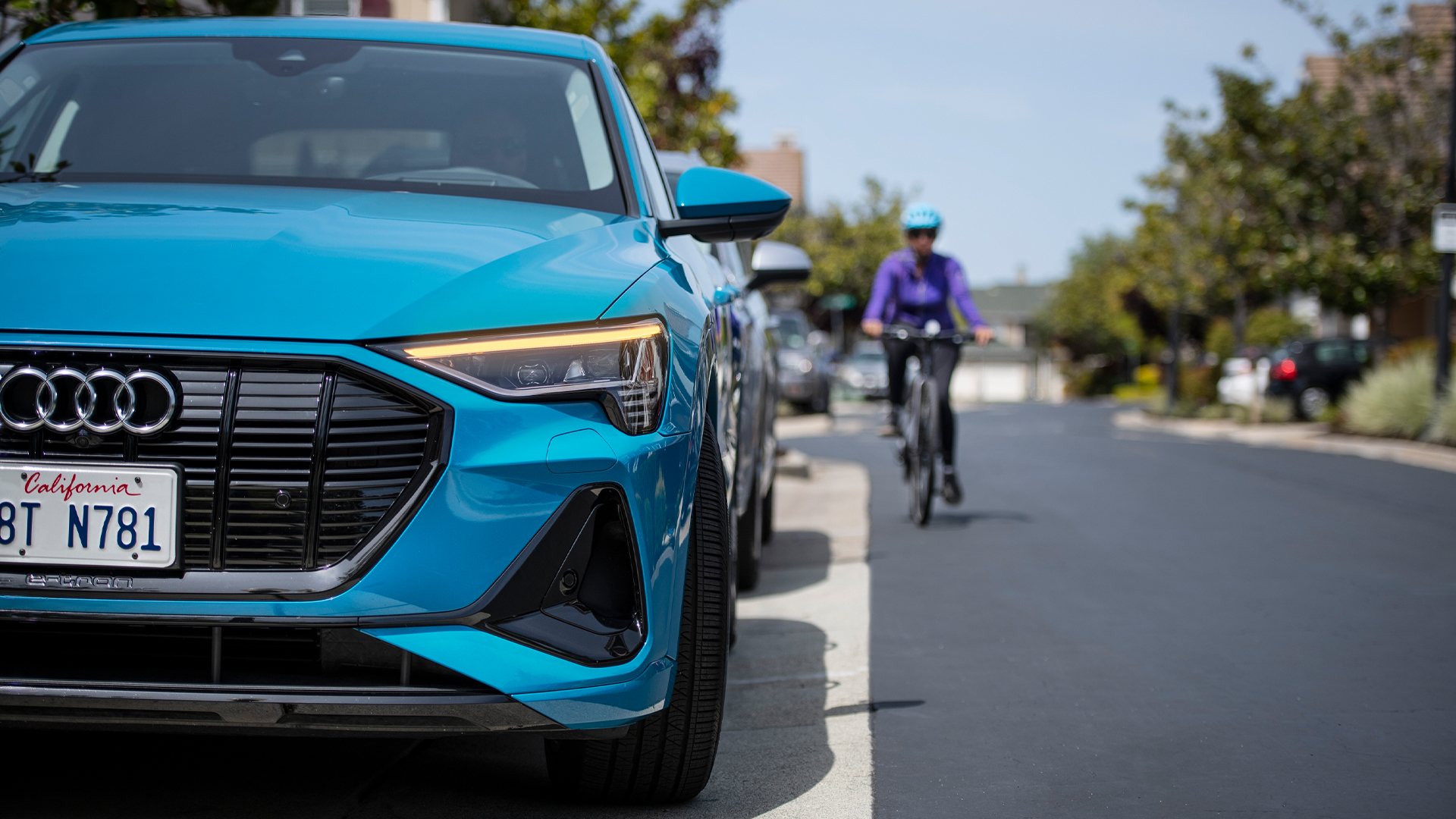

Vehicles have become more connected in recent years (some would say too connected), forcing automakers to utilize communication technologies to improve the safety of drivers on the road. Oftentimes this neglected other vulnerable users also sharing the road, such as cyclists and pedestrians. Audi announced today that it wants to change that by using Cellular Vehicle-to-Everything technology.
C-V2X tech, as it’s called, allows vehicles to send information between other nearby C-V2X-equipped vehicles, as well as cellular radio towers like any typical cell phone. The information transmitted may include road conditions, traffic signal information, location, and more. Audi is aiming to take C-V2X trials a step further by partnering with Spoke, a company pushing the envelope of connected capabilities beyond cars and trucks, effectively fitting the tech to light mobility like bicycles.

Audi’s in-house fleet of connected vehicles has been serving as a testbed for the past few years, piloting everything from communication between cars and traffic lights to understanding the placement of a worker in a construction zone by using a connected vest. The tech allows the vehicles in the test fleet to talk directly with one another using short-range communication. It also pumps the information up to the internet via a cellular connection so that it can be shared with other connected vehicles that may not be in the direct vicinity, but could benefit from having the information—think of a vehicle approaching a traffic jam or construction site.
Now, the partnership between Audi and Spoke enables bicycles fitted with special hardware to also take part in the test. Specifically, the C-V2X hardware on the bicycle can notify a vehicle when the bicycle is approaching, even if it is obstructed by another vehicle and can’t be “seen” by the car using LIDAR, radar, or vision-based detection methods.
If a bicycle is approaching, Audi’s test vehicles are programmed to provide a variety of warnings to the driver in order to avoid a collision. For example, it can provide a proximity warning to let the driver know that there is a cyclist nearby, alerting in case a cyclist is projected to enter the turning path of a vehicle on either side, or the prevention of front, rear, and cross-traffic collisions in a similar fashion. Another useful feature—especially in dense urban environments where cyclists share crowded city streets—is the ability to alert if a bicycle is approaching the vehicle when it is pulling out into traffic from a parking space.

It’s worth mentioning again that this tech is simply in the trial phase via one of Audi’s e-tron Sportback test vehicles. While Audi does currently utilize v2x communication with its Traffic Light Information service, its more advanced safety tech, including this method of protecting cyclists, is something still being tested in the real world.
In 2020, the NHTSA reported that 6,516 pedestrians and 938 cyclists were involved in fatal crashes with automobiles, a 3.9 and 9.2 percent uptick (respectively) over 2019. As more people began returning to the office, those numbers increased even further. NHTSA crash data for 2021 reveals that a total of 7,342 pedestrians and 985 cyclists were killed during that year.
That being said, all automakers are able to benefit from C-V2X in some way, at least once the tech is refined. It would take a wide deployment for the nanny-like tech to be effective on a wide scale. Audi does note that it believes more than 5.3 million devices will be ready to utilize C-V2X technologies by 2023, including vehicles, work zones, railway crossings, bicycles, and other devices, though the burden to expand that number also sits on the shoulders of the manufacturers of these. Until then, perhaps practice the Dutch reach technique for a bit more analog approach to cyclist safety.
Got a tip or question for the author? Contact them directly: rob@thedrive.com